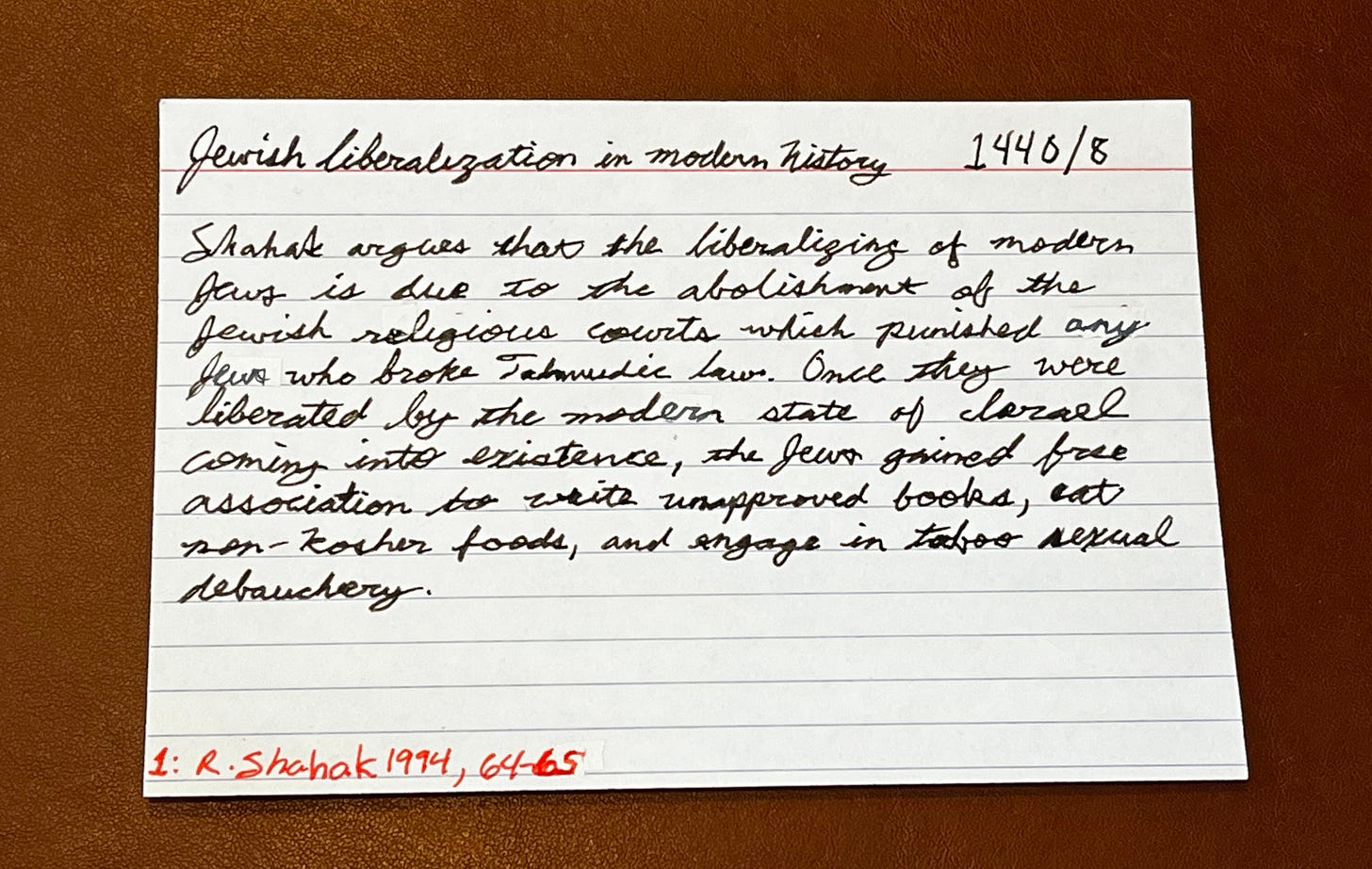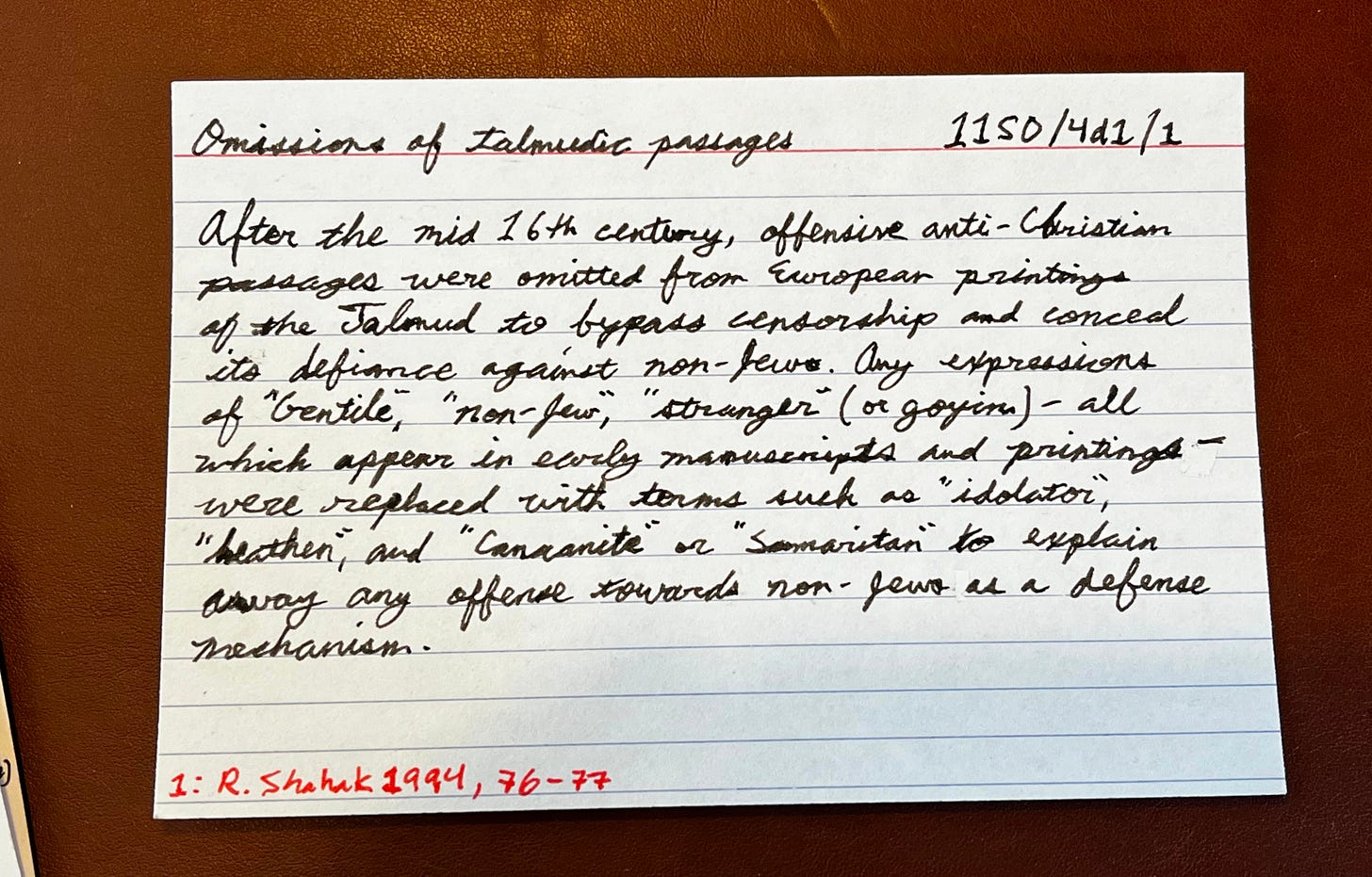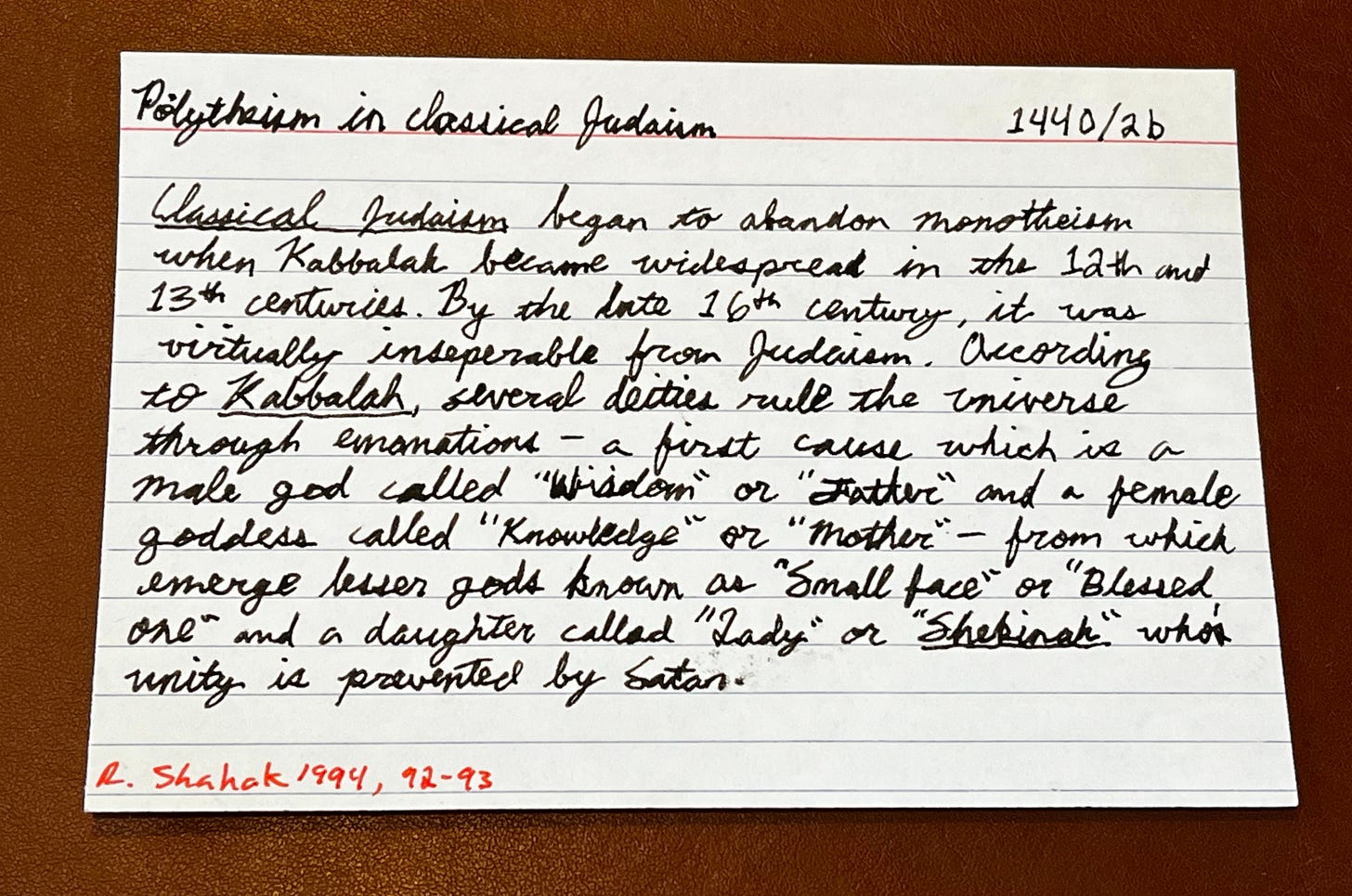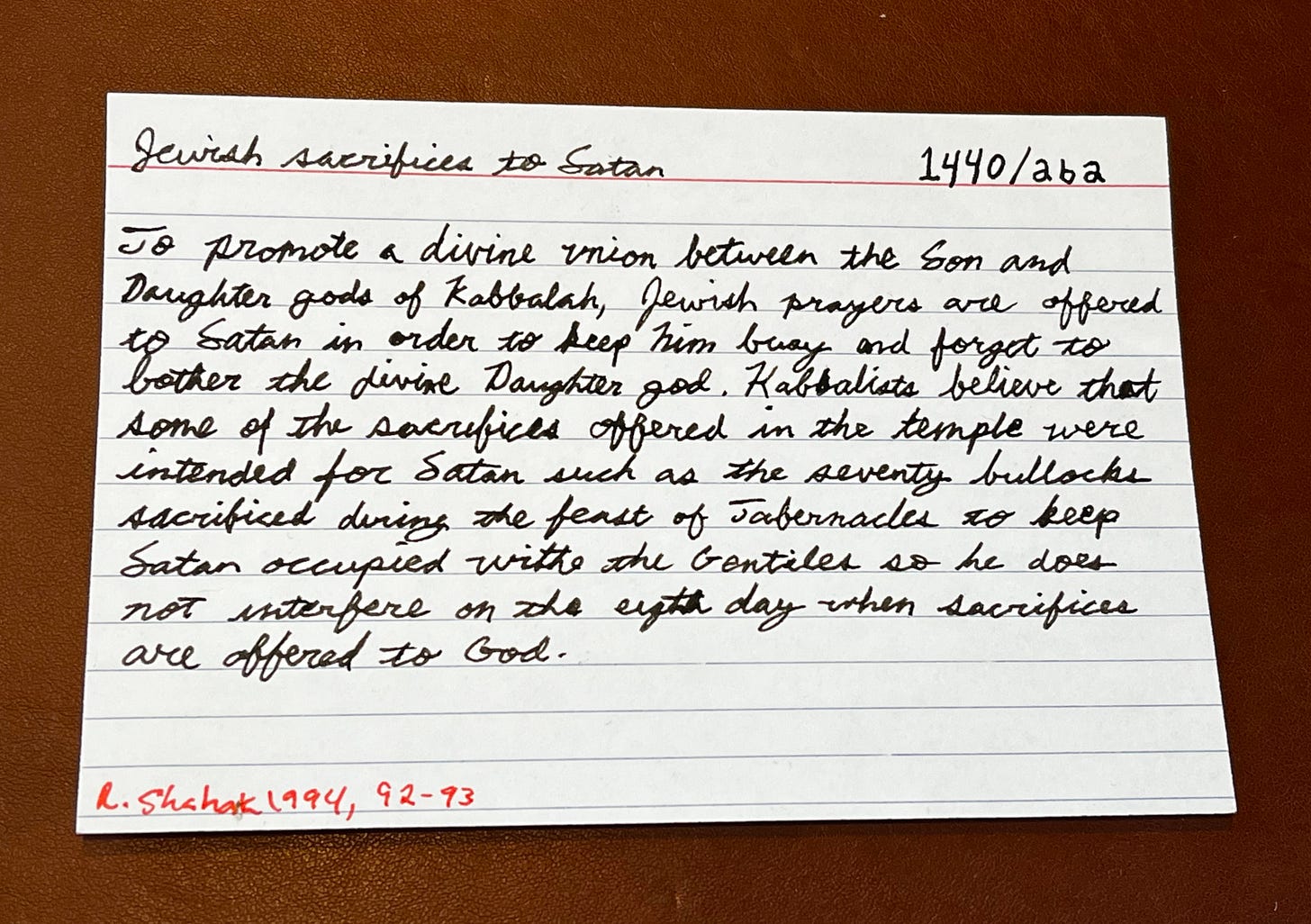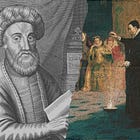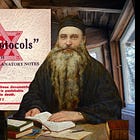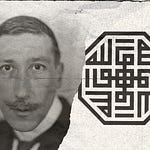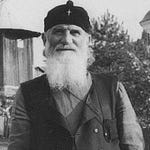You might think you know how absurd Talmudic loopholes are. You might have an idea how the Babylonian Talmud blasphemes Our Lord and refers to Christians as idolatrous beasts. But Israel Shahak’s book Jewish History, Jewish Religion is quite the eye-opener even for a seasoned “noticer”.
This is not some off the wall conspiracy work. Shahak was raised in family of Polish Zionists who became an Israeli civil rights activist after retiring as a professor at the Hebrew University of Jerusalem.
Shahak starts off the book expressing his frustration with Israeli civil rights violations as he recalls an incident of an ultra-religious Jew in Jerusalem who refused to let his phone be used on the Sabbath to help a non-Jew who had collapsed nearby (p.40). After reporting the incident to the Rabbinical Court of Jersusalem, they verified that the Jew in question had acted lawfully. And this is just the tip of the iceberg.
Needless to say, despite receiving a PhD from the top Israeli university, Jewish History, Jewish Religion: The Weight of 3000 Years caused quite a controversy when it was published. It reveals Judaism’s demonic justification for genocide in Israeli warfare, the unethical subjegation of non-Jews, and its special hatred for Christianity and the peasant class.
As I mention multiple times in the recorded book club sessions, Shahak’s credentials make the revelations in this text cut through the often hyperbolic online discourse. Having a book like this to reference from renders sources like The Protocols of the Elders of Zion unnecessary to cite from in order to limit any objection and doubt.
For those who believe modern Jews worship the same God as Christians, or that Jews are the Chosen People of God, this will be a hard pill to swallow.
Here are just some of the many notable excerpts that I found exceptionally shocking in Jewish History, Jewish Religion.
Liberalization of Jews as a consequence of the modern state of Israel
This was the most important social fact of Jewish existence before the advent of the modern state: observance of the religious laws of Judaism, as well as their inculcation through education, were enforced on Jews by physical coercion, from which one could only escape by conversion to the religion of the majority, amounting in the circumstances to a total social break and for that reason very impracticable, except during a religious crisis.
However, once the modern state had come into existence, the Jewish community lost its powers to punish or intimidate the individual Jew.
But the social consequence of this process of liberalisation was that, for the first time since about AD 200, a Jew could be free to do what he liked, within the bounds of his country’s civil law, without having to pay for this freedom by converting to another religion. The freedom to learn and read books in modern languages, the freedom to read and write books in Hebrew not approved by the rabbis (as any Hebrew or Yiddish book previously had to be), the freedom to eat non-kosher food, the freedom to ignore the numerous absurd taboos regulating sexual life, even the freedom to think – for ‘forbidden thoughts’ are among the most serious sins – all these were granted to the Jews of Europe (and subsequently of other countries) by modern or even absolutist European regimes, although the latter were at the same time antisemitic and oppressive. (p.64-65)
Omissions of anti-Christian passages in the Talmud
As explained above, talmudic passages directed against Christianity or against non-Jews had to go or to be modified – the pressure was too strong. This is what was done: a few of the most offensive passages were bodily removed from all editions printed in Europe after the mid-16th century. In all other passages, the expressions ‘Gentile’, ‘non-Jew’, ‘stranger’ (goy, einoyehudi, nokhri) – which appear in all early manuscripts and printings as well as in all editions published in Islamic countries – were replaced by terms such as ‘idolator’, ‘heathen’ or even ‘Canaanite’ or ‘Samaritan’, terms which could be explained away but which a Jewish reader could recognise as euphemisms for the old expressions.
As the attack mounted, so the defence became more elaborate, sometimes with lasting tragic results. During certain periods the Tsarist Russian censorship became stricter and, seeing the above-mentioned euphemisms for what they were, forbade them too. Thereupon the rabbinical authorities substituted the terms ‘Arab’ or ‘Muslim’ (in Hebrew, Yishma’eli – which means both) or occasionally ‘Egyptian’, correctly calculating that the Tsarist authorities would not object to this kind of abuse. At the same time, lists of Talmudic Omissions were circulated in manuscript form, which explained all the new terms and pointed out all the omissions. (p.77)
Modern Judaism is polytheistic
What concerns us, however, is not biblical but classical Judaism; and it is quite clear, though much less widely realised, that the latter, during its last few hundred years, was for the most part far from pure monotheism. The same can be said about the real doctrines dominant in present-day Orthodox Judaism, which is a direct continuation of classical Judaism. The decay of monotheism came about through the spread of Jewish mysticism (the cabbala) which developed in the 12th and 13th centuries, and by the late 16th century had won an almost complete victory in virtually all the centres of Judaism. The Jewish Enlightenment, which arose out of the crisis of classical Judaism, had to fight against this mysticism and its influence more than against anything else, but in latter-day Jewish Orthodoxy, especially among the rabbis, the influence of the cabbala has remained predominant. (p.91)
Sexual theurgy of Kabbalistic prayer rituals
The duty of pious Jews is to restore through their prayers and religious acts the perfect divine unity, in the form of sexual union, between the male and female deities. Thus before most ritual acts, which every devout Jew has to perform many times each day, the following cabbalistic formula is recited: ‘For the sake of the [sexual] congress of the Holy Blessed One and his Shekhinah ... ’
The Jewish morning prayers are also arranged so as to promote this sexual union, if only temporarily. Successive parts of the prayer mystically correspond to successive stages of the union: at one point the goddess approaches with her handmaidens, at another the god puts his arm around her neck and fondles her breast, and finally the sexual act is supposed to take place. (p.93)
Reciting of Kabbalistic prayers to trick angels and worship Satan
Other prayers or religious acts, as interpreted by the cabbalists, are designed to deceive various angels (imagined as minor deities with a measure of independence) or to propitiate Satan. At a certain point in the morning prayer, some verses in Aramaic (rather than the more usual Hebrew) are pronounced. This is supposed to be a means for tricking the angels who operate the gates through which prayers enter heaven and who have the power to block the prayers of the pious. The angels only understand Hebrew and are baffled by the Aramaic verses; being somewhat dull-witted (presumably they are far less clever than the cabbalists) they open the gates, and at this moment all the prayers, including those in Hebrew, get through. Or take another example: both before and after a meal, a pious Jew ritually washes his hands, uttering a special blessing. On one of these two occasions he is worshipping God, by promoting the divine union of Son and Daughter; but on the other he is worshipping Satan, who likes Jewish prayers and ritual acts so much that when he is offered a few of them it keeps him busy for a while and he forgets to pester the divine Daughter. (p.93)
Temple sacrifices made to Satan
Indeed, the cabbalists believe that some of the sacrifices burnt in the Temple were intended for Satan. For example, the seventy bullocks sacrificed during the seven days of the feast of Tabernacles, were supposedly offered to Satan in his capacity as ruler of all the Gentiles,10 in order to keep him too busy to interfere on the eighth day, when sacrifice is made to God.
Many other examples of the same kind can be given. (p.94)
Classical Jewish sources take pride in their role in the execution of Jesus
According to the Talmud, Jesus was executed by a proper rabbinical court for idolatry, inciting other Jews to idolatry, and contempt of rabbinical authority. All classical Jewish sources which mention his execution are quite happy to take responsibility for it; in the talmudic account the Romans are not even mentioned.
The more popular accounts – which were nevertheless taken quite seriously – such as the notorious Toldot Yeshu are even worse, for in addition to the above crimes they accuse him of witchcraft. The very name ‘Jesus’ was for Jews a symbol of all that is abominable, and this popular tradition still persists. The Gospels are equally detested, and they are not allowed to be quoted (let alone taught) even in modern Israeli Jewish schools. (p.117)
Muslims are treated with higher regard than Christians
The attitude of Judaism towards Islam is, in contrast, relatively mild. Although the stock epithet given to Muhammad is ‘madman’ (‘meshugga’), this was not nearly as offensive as it may sound now, and in any case it pales before the abusive terms applied to Jesus. Similarly, the Qur’an – unlike the New Testament – is not condemned to burning. It is not honoured in the same way as Islamic law honours the Jewish sacred scrolls, but is treated as an ordinary book. Most rabbinical authorities agree that Islam is not idolatry (although some leaders of Gush Emunim now choose to ignore this). (p.118)
Indirect murder of Gentiles is morally permissible
According to the Jewish religion, the murder of a Jew is a capital offence and one of the three most heinous sins (the other two being idolatry and adultery). Jewish religious courts and secular authorities are commanded to punish, even beyond the limits of the ordinary administration of justice, anyone guilty of murdering a Jew. A Jew who indirectly causes the death of another Jew is, however, only guilty of what talmudic law calls a sin against the ‘laws of Heaven’, to be punished by God rather than by man. When the victim is a Gentile, the position is quite different. A Jew who murders a Gentile is guilty only of a sin against the laws of Heaven, not punishable by a court. To cause indirectly the death of a Gentile is no sin at all. (p.168)
Further reading:
Judaism’s Strange Gods by Michael Hoffman (Banned Book)
The Jewish Utopia by Michael Higger
Donate
Buy Me A Coffee
BTC: bc1q3g3jq0fyuuwfskdm9trru6tka4l25gaqlhjw3a
ETH: 0x6B1278f003eF30401ea6b098cD4c1Cb833aE58FF
SOL: ATtuvhmpNLbzyPZ5vdF2BVJ37MiVLj9YeriNRRQbGUmY
XMR: 43w4X9UfAvCcubt2u6MFspTxPk6cTusVfTiBdQ1djxgDPpg5LqpFke4gg5s251rn5K9E51vpbnP2qTTG23q5Ksbp1Cc3Jbp
Follow on Socials
X: @a_westgate
Instagram: @the.reversion
Telegram: t.me/thereversion
Discord: The Reversion
Follow on Rumble
Subscribe on YouTube




